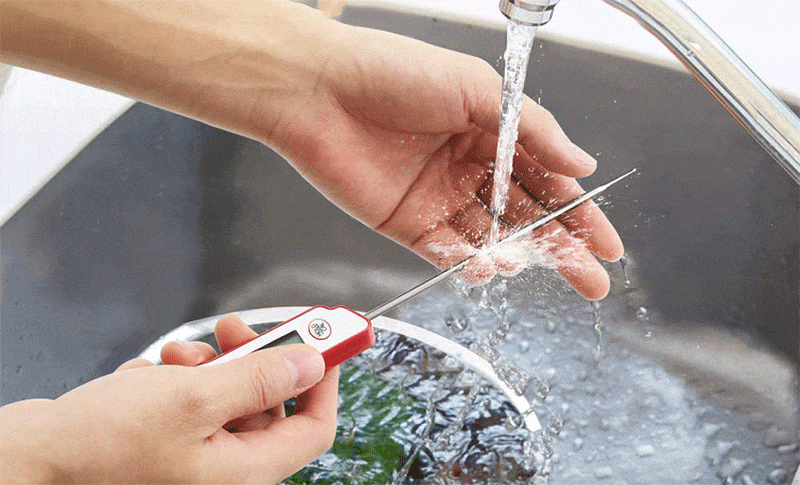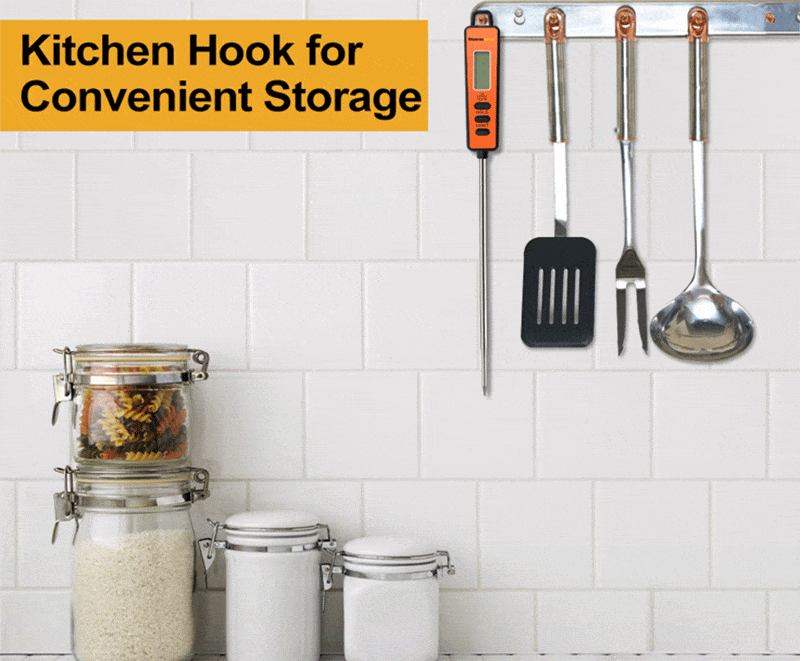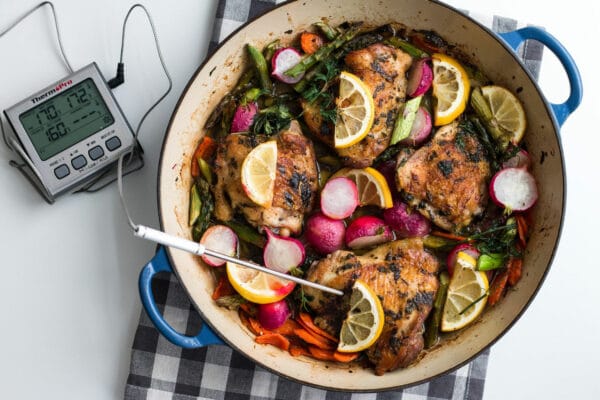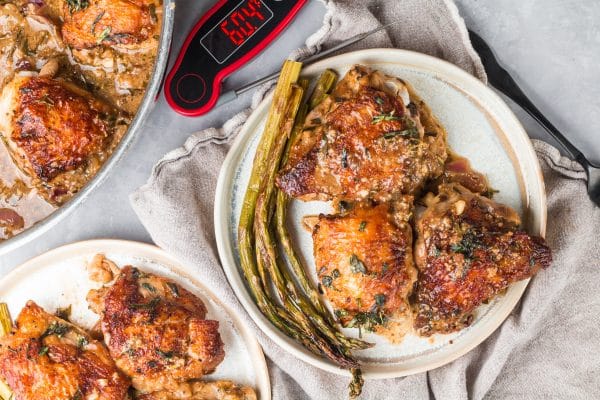The customer service team is always listening, taking notes, and quantifying complaints to ensure our products are continually improved. Due to selling directly to you, the customer, via Amazon, we can use product reviews to help us improve our existing products or help further development of new products.
Table of Contents
Food thermometers help cooks safely grill poultry and meat to their required internal temperatures, which reduces the chance of illness. Keep reading to learn how to use and care for a thermometer, including how to clean a meat thermometer, and the proper techniques for storage.
Avoid Damaging Food Thermometers
When properly used, the ThermoPro Food Thermometer supplies accurate readings that let you know the food you cooked is safe to eat and enjoy. Because the warranty does not cover probe damage, review the below tips and learn how to use and care for a thermometer:
- Make sure the tip and shaft of the probe stay straight; do not let them bend.
- Keep the handle away from high temperatures.
- When inserting the probe, make sure the pins avoid twisting motions.
- Only use the probe for liquids and semi-solid types of food.
- Remember that the probe cannot double as an ice pick.
- Keep the cable away from too much heat – this lessens the chance of it melting.
- The probe tip cannot handle being used to pick up dense food items.
- Keep the probe tip away from fat, bones and the gristly part of meat.
- Keep the coil secure but loose, ensuring it does not get wrapped around the handle.
- Gently guide the probe into food, avoiding any type of stabbing motion.
- Read the probe temperature guidelines to ensure you stay within the limits; keep the probe tip away from flames.
- The device and connector need to stay dry and free from debris.
- Do not perforate or poke around non-food items with the probe.
- Do not test the limits of the cable by attempting to stretch it too far.
- Unless you purchased a waterproof probe, make sure the handle does not fall into excess amounts of liquid.
- Frozen items require additional care. You may create a hole in the item with a drill, giving the probe tip a place to enter, or you may put the probe tip in the middle of two frozen packs. You cannot use the tip itself to create the entry point.
- Do not attempt to pick up the device by the cable or probe.
Steps for Accurate Use
The required internal temperature for safe consumption may vary depending on the type of meat. Follow the below steps to accurately use the ThermoPro Food Thermometer:
Step 1: Always stay away from the sides of containers. If the probe tip reads the temperature at any given side, it may result in an inaccurate reading.
Step 2: When testing a cold food item, you want to locate the warmest section. Then use the probe tip there.
Step 3: Do the opposite when testing hot foods. You locate the coldest part of the item. Then insert the probe tip into the section that appears the thickest.
How to Clean a Food Thermometer
For proper usage, a meat thermometer requires that users follow all the sanitary guidelines. Items like dust, dirt and debris; smoke or fog; and moisture, even from drops of water, may negatively affect the reading. If you accidentally exposed the ThermoPro Food Thermometer to any of the mentioned issues, you may need to take the measurement with a different device like the MicroTherma 2 that comes with a Precision Surface Probe. Use this instrument when you need to measure a surface temperature but find your current thermometer unusable.
After any exposure to unhygienic conditions, clean the thermometer. In addition, clean it around every six months, so it maintains its optimal use. Pay special attention to the lens, also known as the opening, and remove any dust, debris or moisture spots you see.
Some thermometers require special cleaning tools. You must avoid cleaning them with ordinary household chemicals or soap. Keep the following in mind when deciding on how to clean a meat thermometer:

- Use probe wipes when cleaning the probe. When you clean the probe after taking every measurement, you reduce the risk of cross-contamination. Also, use the wipe to remove any items like dirt or food particles from the cable and handle.
- If you ran out of probe wipes, but have paper towels on hand, those work too. Use them in conjunction with a food-safe cleaning product.
- Cotton swabs and soft cloths provide alternative methods for cleaning. You may use either of them with mild detergent, medical-grade alcohol or hot water. However, use caution as thermometers cannot handle being submerged into a sink full of water.
After you located your cleaning supplies, follow the below steps on how to care ThermoPro thermometer:
Step 1: Clean and wipe the lens to remove any form of debris.
Step 2: Move onto the thermometer’s body and clean that section.
Step 3: Wait for the lens to dry. Do not use the device before verifying that the thermometer has completely dried.
Proper Storage Solutions
Once the device is clean and dry, use the below tips for proper storage:
- Monitor the storage temperature – Keep your device between 40 to 149 degrees Fahrenheit (4 to 65 degrees Celsius).
- Pick a dry and cool spot – Avoid storing the unit near a water source. The thermometer will malfunction if waterlogged.
- Avoid shocks and drops – Use a wrist-strap or lanyard, depending on the unit you have.
- Use probe covers – Some units come with probe covers. If you have them, they provide one of the easiest ways to ensure the probe remains sanitary after you cleaned it.
- Use stem sheaths or original packaging – Some probes come with stem sheaths. Place your probe into this or in the original packaging. For some types of glass thermometers, using the original packaging helps protect it from sudden movements that may cause the unit to break.

Grill with Confidence
When it comes to cooking poultry and meat, many prefer the taste that comes with grilling. Now that you know the proper ways to handle, clean and store a ThermoPro Food Thermometer, you may focus on serving everyone’s favorites – at their requested doneness – instead of worrying about contamination and undercooked internal temperatures.









